here’s a photo (left) of a nicely painted locomotive, i believe in service near Boundbrook, NJ, prior to being scrapted in 1956. Also, a Reading I-10 that show rust on the smokebox but still shiuny black paint elsewhere.
dark gray shows detail better than black, especially on the sizes we normally view at
I just ambled over to my bookcase: 5 brass engines. 4 painted BLACK, 1 unpainted brass.
So, mine don’t appear to be grey to me. Being as they’re black.
I will semi-disagree with the previous post. I don’t think the benefit of using grey paint is because the model is small. I think it is because the light level is much lower than outdoors. But, yes, details will be easier to see with some form of grey.
Now, when/if my locos get weathered, there’ll probably be a bit of greyness added, among other things.
I think the “amount” of greyness is pretty important. TOO grey will look, well, grey. And TOO black will make the details harder to see (which is true of my aforementioned locos).
And then there’s the level of weathering one is seeking.
Interesting topic to explore,
Ed
Indoor lighting does not approach the brilliance or intensity of natural sunlight. A pure black model viewed at normal distances becomes a black shape with only the most pronounced features visible. Also, black is a color that is quick to show the effects of the elements. Any body that owns a black vehicle can attest that a couple of days after you wash it, a patina of atmospheric dust becomes readily visible on it. Visualize a piece of railroad equipment that may see a paint shop once in ten or twenty years and you will see that once was black has aged to a gray or brown. To replicate this on a scale model viewed under artificial “daylight”, a dark gray paint is used to suggest black. Personally, I use burnt umber for a grimy weathered black that has a tinge of rust to it or, a dark gray for faded black. The majority of the “black” railroad equipment we see has been exposed to the elements for months, if not years, and is no longer truly black. Fortunately in recent years some manufacturers have picked up on this and gotten away from pure black which obscures the details we pay good dollars for them to put into their products.
I paint my locomotives a mixture of four parts black, one part white, and one part red to produce a warm dark gray.
This is so they look reallistic. Real locomotives are painted black, but they are illuminated by the sun and have large surfaces to reflect light. We cannot duplicate this effect in the train room.
We can duplicate it in photographs, but the eye cannot adjust white balance, ISO speed, or exposure time.
The warm dark gray also photographs better because I do not need to make the exposure so long that whiter colors get washed out.
-Kevin
Nice pictures Kevin. What brand and medium of paint do you use? Dan
I think it was Paul Jansen who started the ‘gray’ trend with his sunbleached southwestern South Pacific locomotives. Suddenly everyone from Washington to Maine was painting locomotives gray.
I don’t paint my steam locomotives grey, nor do I use just black. Instead, I use four different versions of black, depending on where on the locomotive each will be applied.
For the cab and the tender’s sides, I use black with some white or grey added. The boiler and tender deck gets the same black, but with more white or grey added, while the frame and running gear of loco and tender get the same black as the boiler, but with some red added. If I want oily-looking drivers and siderods, I’ll add some silver or graphite paint to the mix. Finally, the smokebox and firebox get black with white, grey, and red added, to create a brownish-grey.
Any details which require additional colours, such as window sash, roofs, tire edges, etc., are airbrushed or brush painted as necessary.
The running gear and trucks get a very low-sheen semi-gloss clear coat, the boiler a slightly shinier semi-gloss clear finish, and the cab and tender sides get a fairly glossy coat of clear finish. The tender deck is Dullcoted, while the smokebox and firebox get no clear finish at all, as the dead-flat paint is the look I’m after.
Most of my locomotives aren’t weathered too heavily…labour was still cheap in the late '30s era of my layout, and the railroad and its employees take pride in the operation.
A modified Bachmann Ten Wheeler…
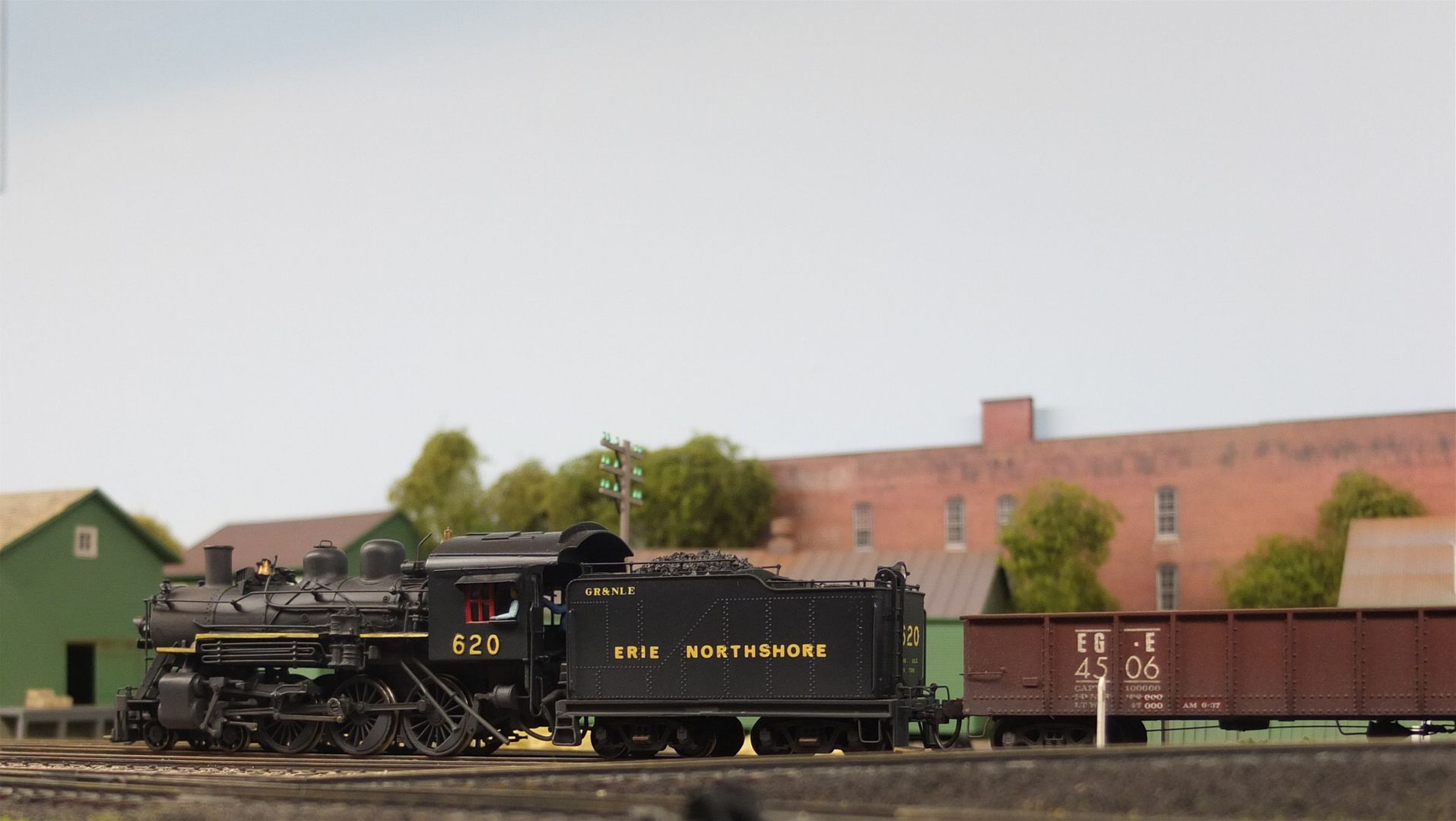
A modified brass model of a B&M B-15 Mogul…
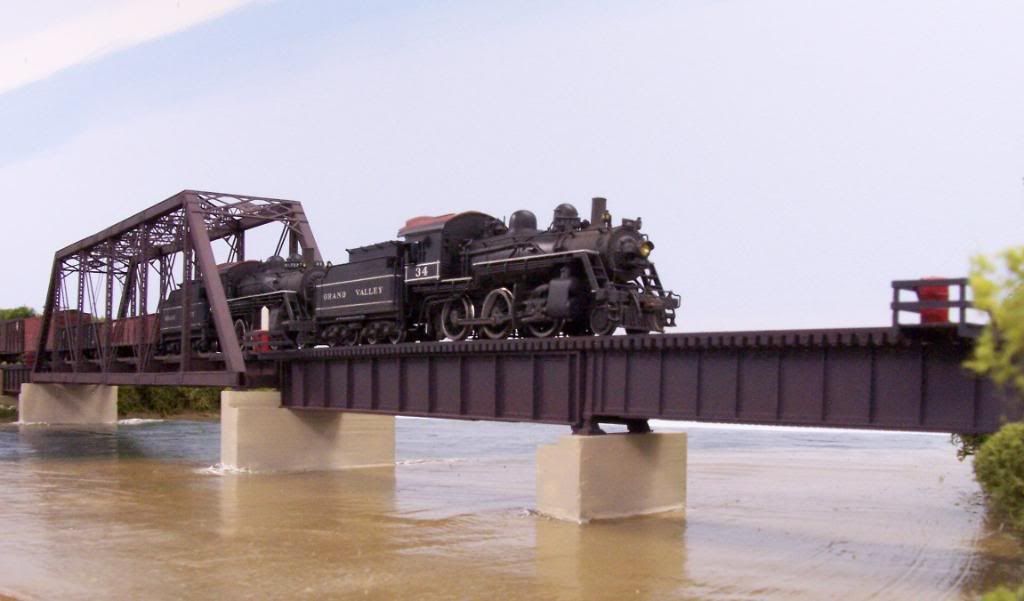
Re-detailed Proto USRA 0-8-0…
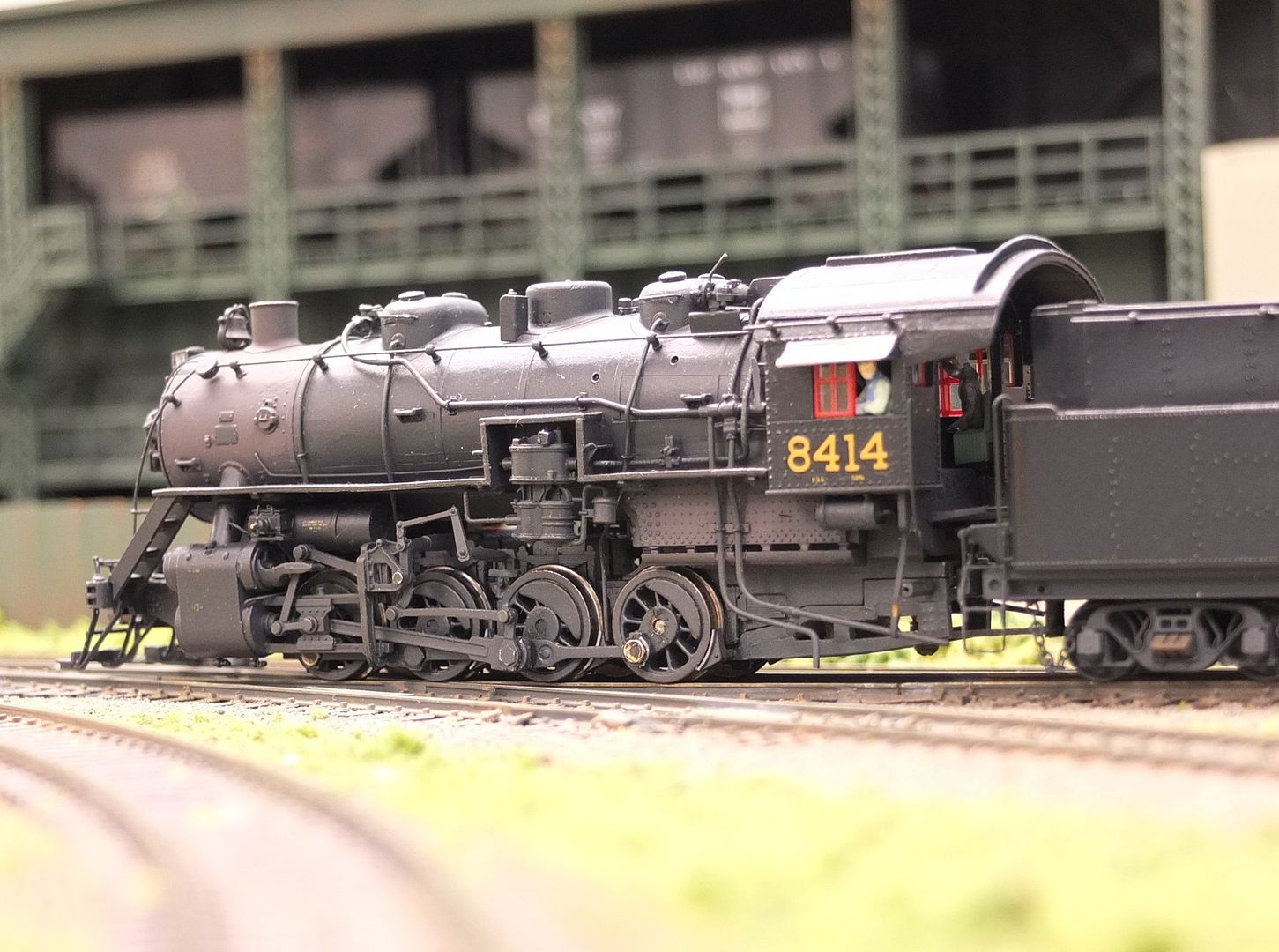
Re-detailed brass CNR 0-6-0…
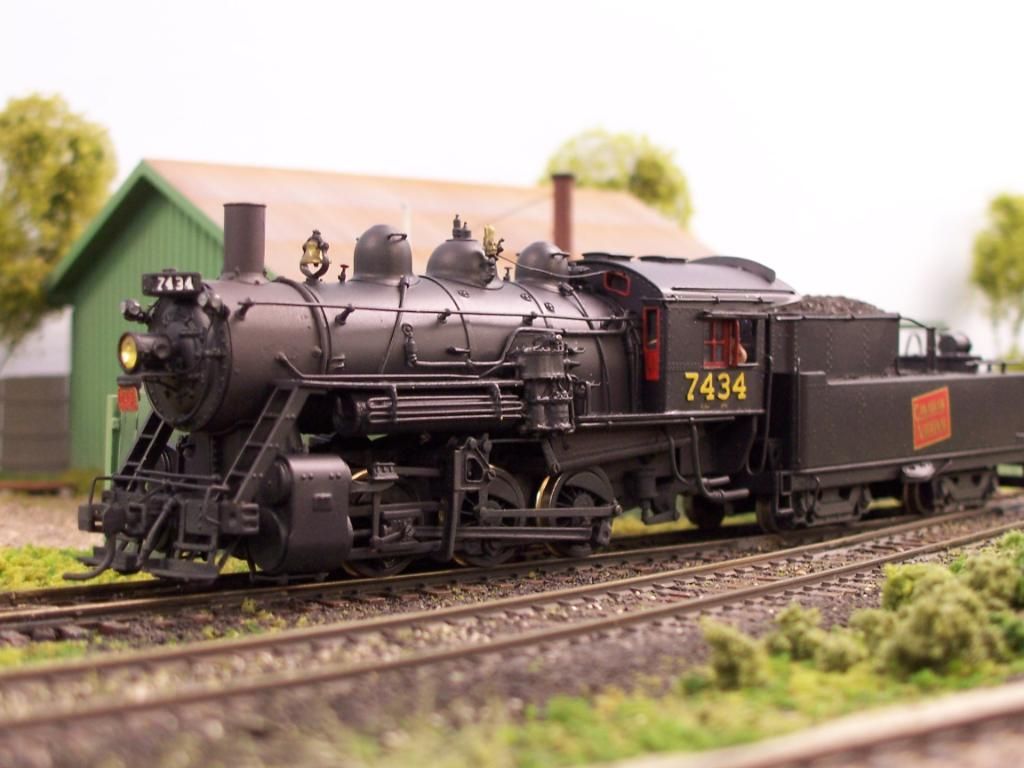
…and a similar one, done for
When I saw the title to this thread, I was hoping for an answer to a question that I have often wondered about. Some of my steamers have the front of the bolier factory painted gray, but the rest of the locomotive is black. Did the prototype follow this practice and, if so, why?
Rich
To answer this question it helps to know that the ‘gray’ paint is usually a high-heat coating on the prototype, usually involving either graphite or aluminum. The smokebox on a locomotive with a Master Mechanic front end ‘sees’ a great deal of internal exposure to hot exhaust gas, cinders and ash, complicated further when ‘self-cleaning’ arrangements of screening, or cyclones or the like, are mounted inside. Much of the heat from these is communicated directly to the shell without the benefit of convective heat transfer to water as in firebox legs.
While some railroads jacketed the full length of the visible boiler, the practical thermodynamic benefits of lagging end at the front tubesheet. It is easier and cheaper to leave the smokebox part of the barrel exposed, but most kinds of black paint used elsewhere on a locomotive, even if well primed, would blister or even char if in an area exposed to high spot heat. Hence the use of graphite in oil as a covering against rust, easy to ‘touch up’ when necessary.
I believe a few roads used paint on smokebox fronts for ‘show’ – Boston and Albany being the one that comes first to mind. Someone here will know if ‘tarpon grey’ had a special formulation. In my opinion very few roads which lagged the side of the smokebox also lagged the front (even when using special latch arrangements on the access doors there) except when ‘semi-streamlining’ them, so you might expect to see the effect of a ‘white face’ there.
That is a good point. Looking at pictures, you can see that geography counts. In Eastern Canada, steam locos came out black from the shop and started to rust way before they got dusty like the locos from the Western dry US states. Some dust did come from the ground, sticking to the lower parts of the engine and the tender. The color of the local ballast often landed there, from what I can see from the pictures.
Simon
I use both black and grey depending on what kind of weathering and results I desire.
This SW7 is painted a dark warm grey to represent a faded black.

This C19 is painted black and then weathered in various grey and beige tones to both lighten the color and weather it.

On this K27 I started with a grey primer and painted it with engine black in light layers to let the primer shine through, and thereby give a faded and lighter color.
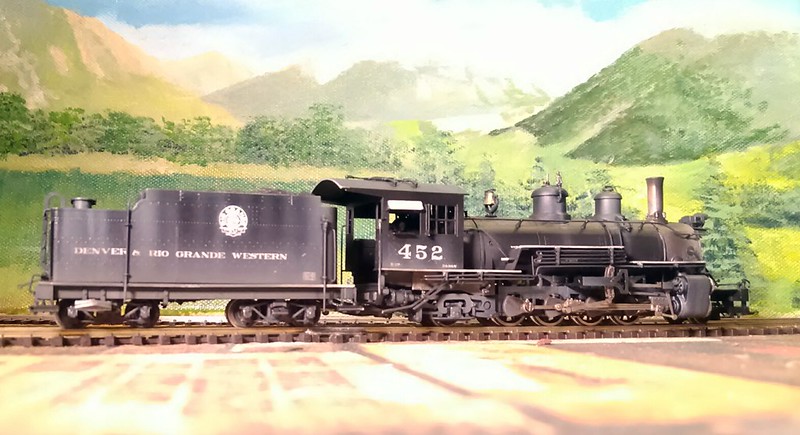
All of them has been weathered afterwards of course. But it’s easier if you have a weathered base to start with…
Dan,
Thank you for the compliment.
I use Scalecoat 2 colors. Engine Black, Reefer White, and CN Bright Red.
Let me know if you have any other questions.
-Kevin
There is an old theatre trick that is also used in movies and TV and it works in the real world too: If you want to hide something paint it black.
From the the combat arms, even better is to paint an alternating series of banding, with varying widths, of light colour and dark colour.
Whatever you do, don’t move! Movement is the single greatest giveaway.
Must be a steam thing.
My NS Diesels are black.
And I mean black.
As is my model of WNYP 430. Black, Not gray, Black.
Now, detail places have a different color, but the main body color is definitely black.
Absolutely true.
I use this trick all the time to hide things on models I don’t want to be noticed.
Black paint is great for hiding what should be hidden.
-Kevin
Good afternoon. Possibly it was Mr. Jansen who started making the “grey” color popular, or possibly John Allen. The grey’s photographed much better for detail and shadows. Mr. Jansen (My late father’s acquaintance) was an exceptional photographer and artist. He made dioramas for his weathered locomotives and photographed them outside using ambient sunlight and backgrounds. Mr. Jansen had many dioramas including the SP Mission Bay engine servicing facility and the old Oakland Mole. I recall visiting his home on a couple of occasions - I believe it was in San Mateo - in the mid-to-late 1950s when we lived in Lafayette, CA. He was fond of a delightful poundcake-ish treat that was called “Honey Cake.” Fond memories, though slightly faded! Owning a Paul Jansen-painted loco would be a family heirloom.
[#welcome] To the Model Railroader dicsussion forums. Your first few posts are delayed by the moderators, but that will end soon enough. Please stick it out through the delays and join in our conversations.
-Kevin
Though an old topic - they painting of model steam locos a more grey than black seemed to be most popular when B&W photography was the order of the day - the details reporduced easier. Lighting and contrast issues, as mentioned. Or else people were copying builder’s photos they say - the real things were often given a coat of water based lighter color paint over the shiny back when posed for the official builder’s photos, then washed off. I saw this mentioned somewhere - I think in Fred Westing’s Baldwin book. Considering he was the official plant photographer for many years, I guess he’d know.
–Randy

